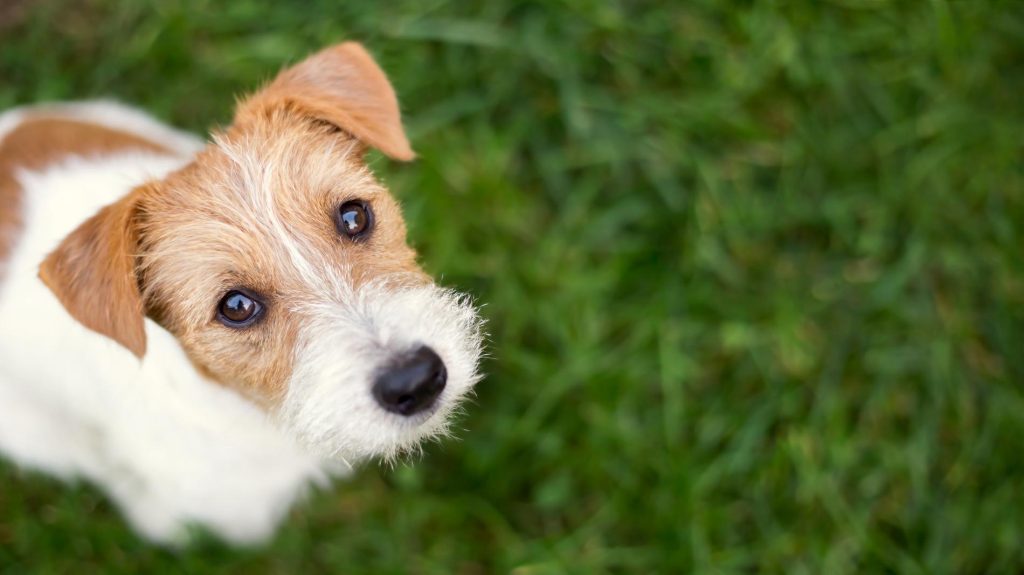Our eyes are important for functioning and navigating the world. While it is possible to live a full life without vision, it is certainly ideal to protect this important sense when possible. Pet vision is no different, and protecting their eyes is important. Learn about eye care for pets from your friends at Clairmont Animal Hospital and how to identify if your pet’s vision is impaired.
The Eyes Have It
The eyes are a pretty unique organ. People, dogs and cats all rely on the same visual process:
- Light enters through the cornea (front of the eye)
- The light passes through the lens
- The lens focuses the light onto the retina at the back of the eye
- Cells in the retina collect information from the light and send it to the brain via the optic nerve
The cells in the retina responsible for interpreting the light are composed of rods and cones. Rods dictate lower light vision and cones perceive color. Dogs only have two types of cones compared to a human’s three, which results in red-green color blindness. Cats, on the other hand, have very few cones which allows them better vision in low light.
The eyes help animals to navigate their environment, stay safe, and experience enrichment. Don’t take your pet’s vision for granted!
Eye Care for Pets
As a pet owner, taking care of your pet’s eyes is important. The eyes are very exposed to the world, and are an amazingly delicate organ.
Do your part by:
- Looking at your pet’s eyes routinely and noticing subtle changes like redness, color changes, discharge, or growths
- Gently wiping the corner of your pet’s eyes as needed to provide good grooming
- Keeping the hair around your pet’s eyes trimmed to avoid irritation
- Bring your pet in for routine wellness visits to help detect changes earlier
Staying on top of your pet’s eye care can prevent serious problems and reduce the chance of trouble down the road.
Is My Pet Going Blind?
Eye problems can come on very quickly and cause serious, irreversible damage within a matter of hours. If you notice changes, quick action is essential.
In addition, many eye problems can initially seem similar, making it difficult to know without an examination how emergent the problem is.
If you notice any changes to the eyes, don’t hesitate to make an appointment right away. It can be tempting to give things a little more time or try an at-home remedy, but some eye problems are very time sensitive. Delaying treatment can lead to blindness or other complications.
Have your pet evaluated if you notice:
- Squinting
- Pawing at or rubbing the eye
- Increased watery discharge
- Yellow or green discharge
- Uneven pupils or pupils that do not change with changes in lighting
- Change in the appearance of the eye’s surface (cornea)
- Redness around or in the eye
- Change in vision
Pets can go blind in one or both eyes, and changes can be sudden or slow. Behavior changes like increased anxiety, depression, and decreased energy can indicate something is wrong. Also look for avoidance of stares, startling more easily, bumping into things, or trouble navigating new environments.
If you suspect that your pet is having vision changes or notice anything else concerning, don’t wait to let us know. Our ophthalmology services are here to help determine what is going on with your pet’s eyes so that we can help.


